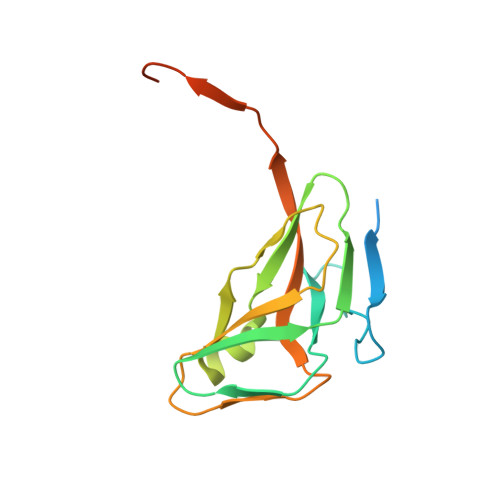Discovery of a novel class of potent human deoxyuridine triphosphatase inhibitors remarkably enhancing the antitumor activity of thymidylate synthase inhibitors
Miyahara, S., Miyakoshi, H., Yokogawa, T., Chong, K.T., Taguchi, J., Muto, T., Endoh, K., Yano, W., Wakasa, T., Ueno, H., Takao, Y., Fujioka, A., Hashimoto, A., Itou, K., Yamamura, K., Nomura, M., Nagasawa, H., Shuto, S., Fukuoka, M.(2012) J Med Chem 55: 2970-2980
- PubMed: 22339362
- DOI: https://doi.org/10.1021/jm201628y
- Primary Citation of Related Structures:
3ARN - PubMed Abstract:
Inhibition of human deoxyuridine triphosphatase (dUTPase) has been identified as a promising approach to enhance the efficacy of 5-fluorouracil (5-FU)-based chemotherapy. This study describes the development of a novel class of dUTPase inhibitors based on the structure-activity relationship (SAR) studies of uracil derivatives. Starting from the weak inhibitor 7 (IC(50) = 100 μM), we developed compound 26, which is the most potent human dUTPase inhibitor (IC(50) = 0.021 μM) reported to date. Not only does compound 26 significantly enhance the growth inhibition activity of 5-fluoro-2'-deoxyuridine (FdUrd) against HeLa S3 cells in vitro (EC(50) = 0.075 μM) but also shows robust antitumor activity against MX-1 breast cancer xenograft model in mice when administered orally with a continuous infusion of 5-FU. This is the first in vivo evidence that human dUTPase inhibitors enhance the antitumor activity of TS inhibitors. On the basis of these findings, it was concluded that compound 26 is a promising candidate for clinical development.
Organizational Affiliation:
Tsukuba Research Center, Taiho Pharmaceutical Co. Ltd., Okubo 3, Tsukuba, Ibaraki 300-2611, Japan.
















